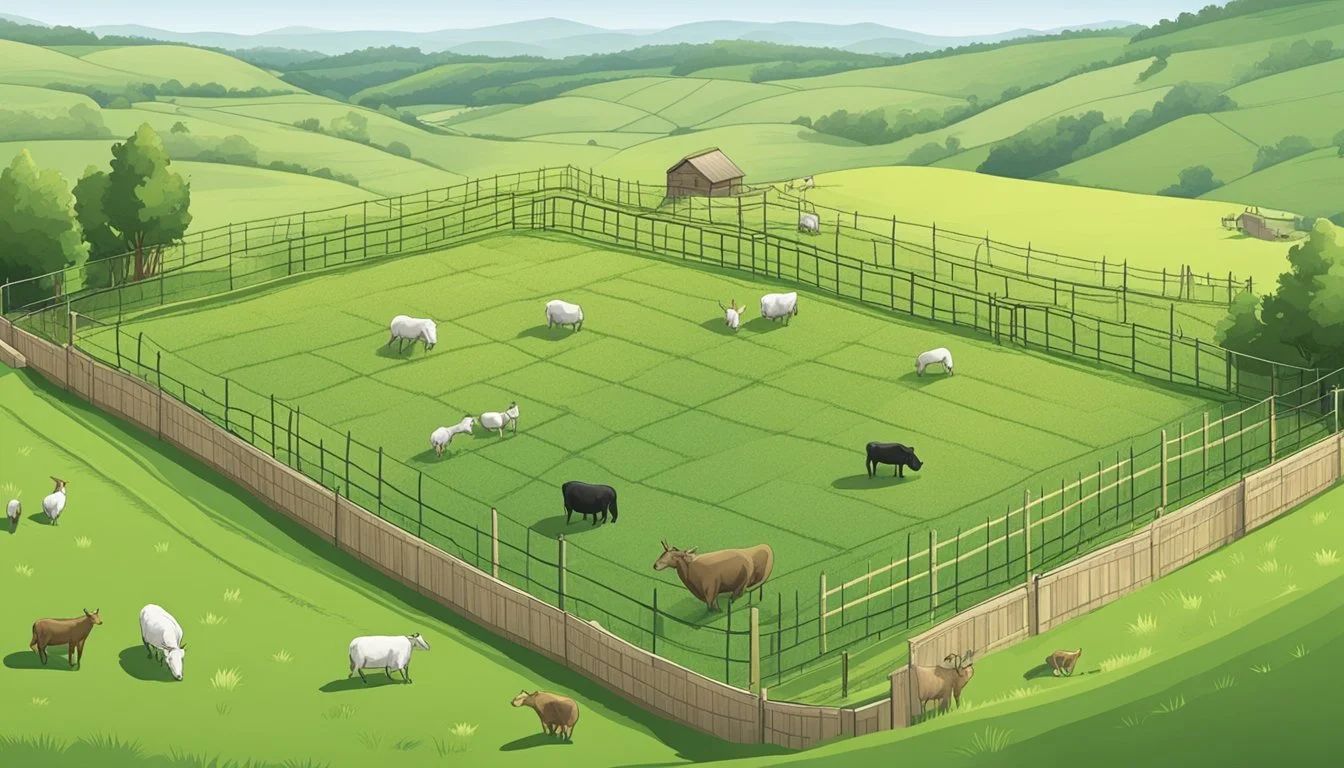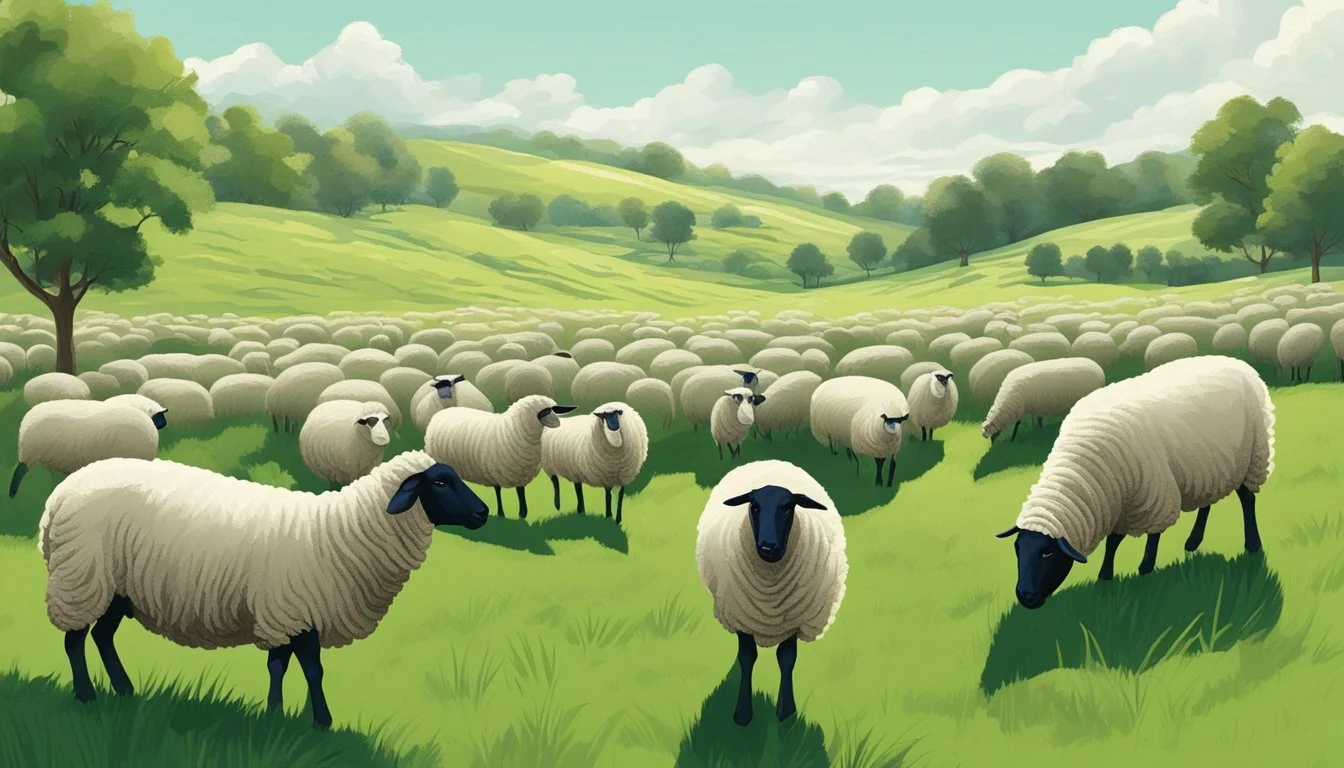What Are the Best Practices for Flock Rotation and Rest?
Key Strategies for Sustainable Grazing
Management of livestock through rotational grazing is a critical component of sustainable agriculture. By practicing flock rotation, farmers and ranchers can maintain the quality of their pastures and provide their animals with healthier, nutrient-rich forage. Effective rotational grazing involves moving livestock between different pastures, or paddocks, to allow grasses in the previously grazed areas time to recover, regrow, and replenish root reserves. This method not only sustains pasture health and longevity but also supports better weight gain in animals and can increase milk production.
Understanding the nuances of rotational grazing requires examining both the growth patterns of the forage and the grazing behaviors of livestock. Implementing a successful rotation schedule means ensuring that animals are moved to new paddocks when forage reaches the optimal height for consumption without overgrazing. Moreover, the resting period for each paddock is crucial, as it must be long enough for forage to recover but not so long that the grasses become too mature and lose nutritional value.
There are many benefits to rotational grazing, including improved pasture utilization and reduced feed costs. For example, with careful planning and management, some farmers have been able to halve their grazing expenses. Moreover, the system can adapt to changing conditions, such as variations in climate or animal demands. Having a flexible rotational scheme allows for adjustments based on real-time observations of both the pasture's growth and the animals' needs, ensuring the sustained health of the livestock and the land.
Understanding Flock Rotation
Flock rotation is a strategic approach to pasture management that balances grazing pressure with forage recovery, ultimately supporting both pasture growth and livestock health.
Basics of Rotational Grazing
Rotational grazing is a system where livestock are moved between paddocks to allow forage in previously grazed areas to recover. This method is designed to optimize forage production by controlling the grazing season and the livestock density. Proper fencing plays a crucial role in creating paddocks and managing the movement of the livestock. Additionally, providing adequate water sources in each paddock is essential to maintain the health of the flock and the productivity of the pasture.
The Role of Pasture Rest Periods
Rest periods are critical for maintaining pasture health. After grazing, plants need time to renew their root systems and promote plant growth. The rest period's length depends on factors such as plant species, soil fertility, and growth rate. Pasture rest also allows for the breakdown of manure, benefiting soil structure and nutrient balance. Effective pasture management ensures these rest periods are timed correctly to coincide with the plant's growth phases, thereby maximizing forage recovery.
Benefits of Flock Rotation
Flock rotation provides numerous benefits. Firstly, it evens out the grazing pressure, preventing overgrazing, and soil compaction, thus protecting soil health. Secondly, it contributes to diversified plant species within the pasture, leading to improved forage availability and quality. Moreover, a well-managed rotation grazing system can enhance forage production and extend the grazing season, reducing the need for supplemental feed and associated costs. Lastly, livestock benefit from access to high-quality forage, resulting in better health and productivity.
Best Flock Rotation Practices
Successful flock rotation hinges on precise stocking rates, timely rotations, meticulous pasture management, and a thorough understanding of animal nutrition and health.
Calculating Stocking Rates
Stocking rates are crucial for maintaining the balance between forage availability and grazing pressure. They should be calculated based on forage growth rate and animal feed requirements. An optimal stocking rate ensures that animals have adequate forage throughout the grazing period without overburdening the soil.
Timing and Frequency of Rotations
The timing and frequency of rotations are determined by factors such as forage growth and rest periods needed for pasture recovery. Rotations should allow adequate regrowth of forage, which could range from a few days to several weeks, depending on soil fertility and forage species.
Pasture Management and Fertilization
Effective pasture management includes using fencing for grazing management and ensuring soil health through proper fertilization. The goal is to achieve consistent forage availability, which can be supported by soil testing to tailor fertilization to the specific soil characteristics.
Animal Health and Nutrition
Animal performance is closely tied to health and nutrition. Management practices must include regular health checks and adjustments to feed requirements, to keep the flock healthier and maintain high production standards. Nutrition directly impacts animal health, so it should be managed in line with the available pasture and supplemental feed if necessary.
Designing a Grazing System
When designing a grazing system, careful consideration must be given to the infrastructures required, the efficient subdivision of pastures, and the distribution of water systems to support livestock throughout the grazing season.
Grazing Infrastructures
In Management-intensive Grazing (MIG) systems, infrastructures are key for efficient and effective livestock movement and pasture management. Durable temporary fencing is essential, often employing electric fences to allow for easy adjustment and rotation. Fencing should withstand various weather conditions and temperatures, ensuring that it remains functional during drought periods and beyond.
Pasture Division and Paddock Layout
Dividing a pasture into smaller paddocks creates a controlled grazing environment where forage is utilized effectively. An ideal layout includes multiple paddocks that cater to the size and type of the flock or herd. Strategic planning ensures livestock graze one section while another recovers, optimizing forage regrowth and minimizing the need for additional fertilizer.
Water Systems and Distribution
Access to clean water is critical for livestock health and optimizing the grazing system's productivity. Water systems must be designed for easy access within each paddock. This may involve placing troughs or tanks at central locations and ensuring reliable water sources even during periods of drought. Proper distribution helps maintain animal condition and supports pasture sustenance throughout the grazing season.
Environmental and Ecological Considerations
In implementing flock rotation and rest, it's essential to consider the environmental and ecological impacts such as soil quality, plant and animal diversity, and pest management. These factors are interdependent, and a strategic approach can result in a sustainable and productive ecosystem.
Soil Conservation
Proper flock rotation improves soil conservation by preventing overgrazing and allowing periods for soil recovery. This process reduces soil erosion and maintains soil structure. Manure from poultry contributes to soil fertility by adding organic matter that enhances the soil's ability to retain water and nutrients. It also supports the growth of forages like clover and other desirable plants, which can further protect the soil by strengthening the root system.
Promoting Plant and Animal Biodiversity
Rotating flocks encourages a variety of plant species to thrive, which in turn supports a rich biodiversity. Diverse plant life ensures a balanced diet for the poultry and provides habitats for beneficial insects and wildlife. The growth of grass and other plants is vital as they offer cover and contribute to a dynamic environment where different species can coexist and flourish.
Integrated Pest and Weed Management
Integrated pest and weed management is a critical aspect of flock rotation. Birds naturally feed on weeds and parasites, which can help control these potentially harmful organisms without the need for chemical interventions. Additionally, the disturbance of soil by poultry can disrupt the life cycles of pests and discourage weed regeneration, thus promoting the growth of regrowth of desirable plants and maintaining the balance of the ecosystem.
Monitoring and Adapting the Flock Rotation
Effective flock rotation hinges on continuous observation and strategic adjustments. It encompasses evaluating pasture viability, adjusting to climatic fluctuations, and integrating technological aids for informed decision-making.
Assessing Pasture Quality and Regrowth
The cornerstone of flock rotation is maintaining quality pasture. Evaluators must regularly check forage growth to ensure it meets the flock's nutritional demands. They should assess the pastures based on indicators of - soil fertility, plant diversity, and signs of overgrazing. When careful planning is combined with active monitoring, pastures can recuperate and provide adequate feed across the growing season.
Adapting to Weather Changes and Seasons
Weather conditions greatly affect forage growth and, in turn, flock rotation schedules. During extreme weather, such as prolonged droughts or excessive rainfall, one must adapt rotational plans to preserve pasture health. This might include temporary confinement or seeking alternative feeding strategies. These adaptations help safeguard the flock's immune system by minimizing stress and exposure to pathogens that can thrive in compromised environments.
Using Technological Tools and Extensions
Technological advancements offer valuable support in optimizing flock rotation. Tools like geographic information systems (GIS) and drones can provide aerial pasture images, aiding in comprehensive monitoring. Furthermore, resources provided by agricultural extensions can offer guidance tailored to local conditions, incorporating factors like seasonal patterns, genetics, and recommended careful planning approaches. Utilizing these resources leads to dynamic adaptation strategies that enhance overall flock health and productivity.
Economic Aspects of Flock Rotation
Flock rotation strategies can influence the economic outcomes for farmers by affecting feed costs, productivity, and profitability. These rotations are instrumental in optimizing grazing periods and pasture management, which can reduce reliance on supplementary feeds such as hay, in turn lowering feed and maintenance costs. Labor and financial management are also key factors that interplay with the economic viability of flock rotation practices.
Cost-Effectiveness of Grazing Management
Implementing strategic grazing management by rotating flock positions can be cost-effective. Properly timed rotations maximize pasture usage and allow rest periods, causing grass to regenerate. This reduces the need for expensive feed purchases and minimizes labor costs associated with feeding. Farmers report that a well-managed rotation schedule increases the productivity of pastures, indirectly enhancing economic efficiency.
Example of a rotational grazing calendar:
Week 1-2: Paddock 1 (Grazing)
Week 3-4: Paddock 2 (Grazing, Paddock 1 rests)
Week 5-6: Paddock 3 (Grazing, Paddock 1 & 2 rest)
...and so on.
Improving Farm Profitability
Flock rotation contributes to farm profitability by maintaining the health of the pasture, which supports a larger number of animal units per acre. This leads to an increase in the productivity of the livestock and potentially a higher yield of products like eggs or meat. Farmers can thus potentially market their products with claims of enhanced sustainability, possibly fetching a higher market price.
Increase in livestock productivity: Up to 20%
Marketability: Sustainable farming practices as a selling point
Reduction of Feed and Maintenance Costs
By extending the natural grazing period and relying less on supplemental feeding with hay or grains, farmers can make significant savings on feed costs. With rotations, pastures are given time to recover, preventing overgrazing and soil depletion. This also leads to lower maintenance costs and labor, as there is less need for interventions like reseeding or erosion control.
Typical feed cost savings: 15-25%
Maintenance costs: Directly related to pasture health
Farmers who adopt flock rotation as a component of their pasture management can expect a tangible impact on their farm's economics. Because the approach is centered on making the most of natural resources and seasonal cycles, it can create a balance between sustainability and profitability.
Advanced Flock Rotation Techniques
When managing agricultural land, farmers must consider the symbiotic relationship between the land and their livestock. Advanced flock rotation techniques can be highly beneficial for sustaining and enhancing this balance. Below, we discuss two specific strategies: multi-species grazing and targeted grazing for land management.
Multi-Species Grazing
Introducing multi-species grazing involves the strategic intermingling of different livestock species – such as goats, sheep, cows, and horses – each with its unique foraging behavior and dietary needs. This variety promotes diversity in pasture use and can result in a more uniform grazing pattern, as different animals prefer different plant species and graze at different heights. Goats, known for their ability to browse shrubs, can help control brush, while sheep predominately graze on forbs and grass, and cows consume coarse materials that others bypass. Incorporating dry cows or other non-lactating ruminants can assist in maintaining the pasture during less productive seasons.
Goats: Browse shrubs, aiding in brush control.
Sheep: Typically graze on forbs and grass.
Cows: Consume taller grasses and roughage, often left by other species.
Horses: Add diversity by grazing on a variety of forages.
Targeted Grazing for Land Management
Targeted grazing is the practice of using livestock to specifically manage land resources. By controlling where and when animals graze, farmers can use flock rotation not just to feed animals but to achieve specific land management objectives. This technique makes use of the natural behavior of livestock to modify vegetation, control invasives, reduce wildfire risk, and enhance soil health. By managing the timing and intensity of grazing, farmers can ensure that land is not overgrazed, which helps maintain healthy pastures for successive rotations.
Livestock: Act as a tool for vegetation management and soil enhancement.
Rotational Grazing: Helps prevent overgrazing by moving animals through a series of paddocks.
Grazing Management: Involves careful planning of stocking rates, timing, and grazing duration.
These advanced techniques, when implemented with a clear understanding of animal behavior and ecological principles, benefit livestock health and productivity while simultaneously supporting sustainable land management.






